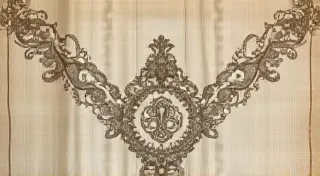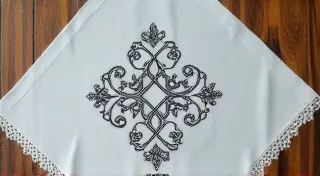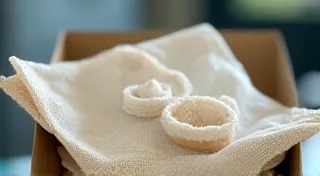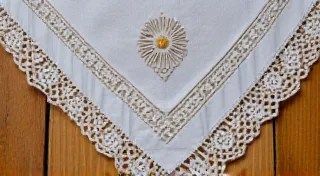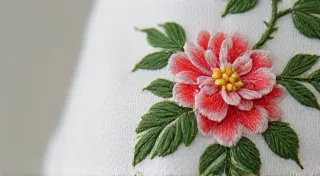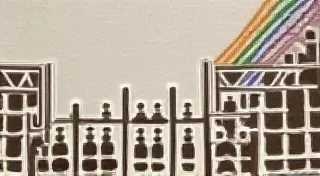Victorian Era Handkerchiefs: A Focus on Floral Motifs
The Victorian era (roughly 1837-1901) represents a golden age for handkerchiefs, and particularly for those showcasing intricate and beautiful floral motifs. More than just practical items, Victorian handkerchiefs were frequently gifted, carried as status symbols, and treasured as heirlooms. Understanding the prevalence and significance of these floral designs offers valuable insight into the era's aesthetic and social customs. They weren't simply cloths to dab tears; they were carefully chosen messengers, carrying sentiment and status.
The Rise of Floral Designs
While floral patterns had appeared on handkerchiefs before, the Victorian period saw them reach unprecedented levels of detail and popularity. The burgeoning industrial revolution, coupled with a renewed appreciation for nature, dramatically changed the landscape of textile production and consumer taste. The rise of industrial printing techniques allowed for more complex designs to be transferred onto fabric, making elaborate patterns accessible to a wider audience. Simultaneously, a renewed interest in nature and romanticism fuelled the demand for these beautiful depictions, reflecting a desire to connect with the natural world amidst rapid industrialization.
Hand embroidery remained a cherished skill, often passed down through generations, and resulted in exquisitely detailed floral compositions. These weren’t mass-produced items; they were often labors of love, reflecting the skill and dedication of the embroiderer. The dedication to intricate detail extended to the fabric itself; understanding the nuances of antique handkerchief fabrics – linen versus cotton versus silk – can offer further clues about the handkerchief's origin and its place within the Victorian social hierarchy. Each choice of fabric subtly communicated the owner's position and taste.
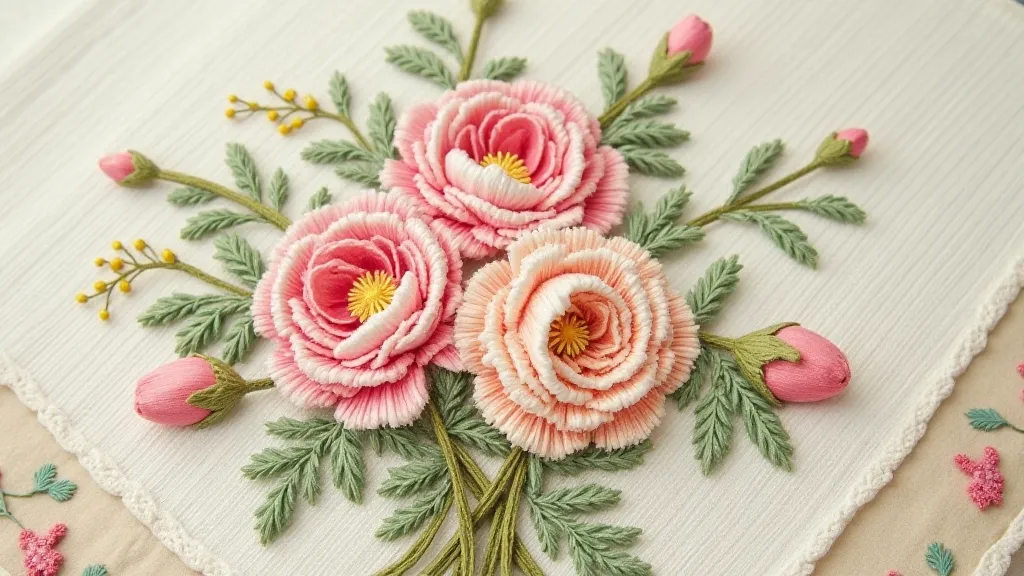
Common Floral Motifs and Their Symbolism
The choice of flower was rarely arbitrary. Victorians embraced the language of flowers, or “floriography,” where each bloom carried a specific meaning. This intricate system of floral symbolism allowed for subtle and nuanced communication, often circumventing the limitations of polite Victorian society. Here's a glimpse into some common floral motifs and their associated symbolism:
- Roses: Perhaps the most ubiquitous floral symbol, roses represented love, beauty, and passion. Different colors carried further nuanced meanings – red for deep love, pink for grace and admiration, white for purity and innocence. A single red rose could speak volumes, while a bouquet might convey a complex narrative.
- Forget-Me-Nots: These delicate blue flowers symbolized remembrance and enduring love. Gifting forget-me-nots was a poignant declaration of a bond that time could not erase.
- Lilies: Lilies, especially lily of the valley, represented purity, sweetness, and humility. Often associated with new beginnings and innocence, lilies were popular choices for weddings and christenings.
- Sweet Peas: Sweet peas symbolized blissful pleasure and thank you for kindness. Their delicate fragrance and vibrant colors made them a charming and appreciated gift.
- Violets: Violets expressed faithfulness and modesty. Their understated elegance reflected a virtue highly prized in Victorian society.
It's important to note that combinations of flowers could create more complex messages, allowing for subtle communication between sender and recipient. For example, pairing a rose with forget-me-nots might convey enduring love and remembrance. Beyond the overt symbolism, the very act of creating these handkerchiefs was a form of communication—a silent language woven with thread and bloom, a topic explored further in "The Bloom of Silence: Hand Embroidery as a Language of the Lost – reflecting the social restrictions placed upon women during the Victorian era. The intricate embroidery itself told a story, a testament to the skill and patience of the artisan.
Design Trends in Victorian Handkerchiefs
Beyond the symbolism, several distinct design trends emerged during the Victorian era. These trends weren't arbitrary; they reflected evolving aesthetic preferences and the changing techniques available to textile artisans.
- Corner Designs: The most common arrangement featured a large floral spray or cluster in one corner of the handkerchief. This design maximized the visual impact and allowed for a focal point.
- Border Patterns: Elaborate borders, often incorporating repeating floral or geometric patterns, were frequently seen. These borders framed the central design and added a layer of complexity.
- Central Medallions: Some handkerchiefs featured a prominent floral design in the center, surrounded by a border. This style created a sense of balance and symmetry.
- Monograms: Initials, often entwined with floral decorations, were a popular personalized touch. Monogrammed handkerchiefs were a mark of distinction and indicated the owner's social standing.
Fabrics Used
Victorian handkerchiefs were crafted from a variety of fabrics, each chosen for its unique qualities and aesthetic appeal. The choice of fabric not only impacted the appearance of the handkerchief but also communicated something about its owner's status and taste. Common choices included:
- Linen: A popular choice for its durability and crispness. Linen’s natural fibers gave it a subtle texture and an elegant drape.
- Cotton: Often used for more affordable handkerchiefs. While cotton was more accessible, the finest cotton handkerchiefs were still meticulously crafted and often featured intricate embroidery.
- Silk: Reserved for the most luxurious and special handkerchiefs. Silk’s luxurious sheen and delicate texture made it the pinnacle of Victorian handkerchief artistry.
The quality of the fabric directly impacted the overall value and perceived status of the handkerchief. Linen, prized for its strength and elegant drape, often graced the hands of the upper classes. While cotton offered a more accessible option, the finest cotton handkerchiefs were still meticulously crafted. Silk, with its luxurious sheen and delicate texture, represented the pinnacle of Victorian handkerchief artistry. The journey from raw material to finished product was complex, demanding skilled weavers and embroiderers—a craft that, even then, was recognized for its artistry and importance in preserving traditions. Examining these textiles often reveals unexpected stories, echoing the lives of those who created and used them—a sentiment explored further in "The Whispers of Threads: Unraveling Personal Narratives in Antique Linen.
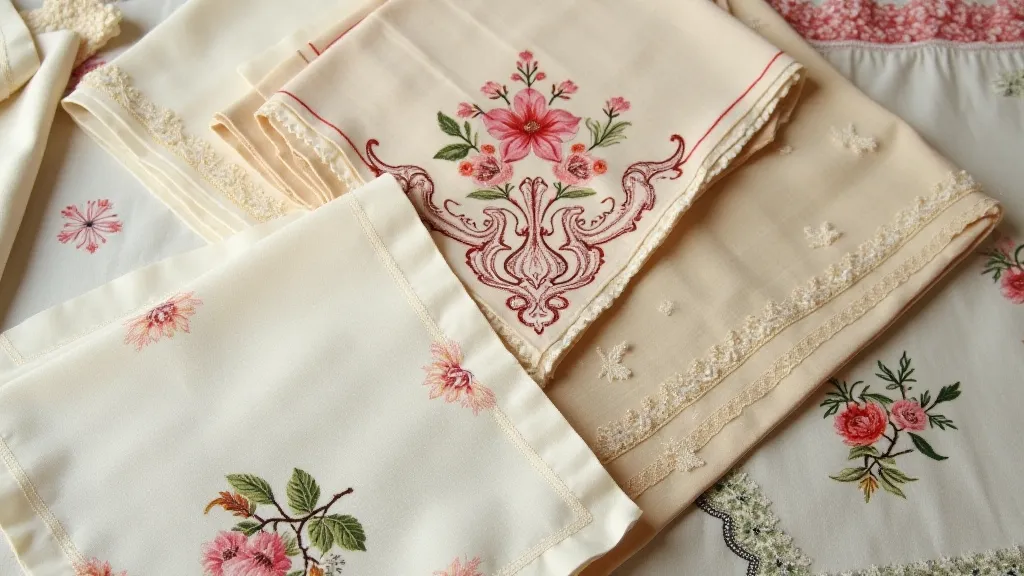
Identifying and Valuing Victorian Handkerchiefs
When identifying a Victorian handkerchief, consider the following. Distinguishing between an authentic Victorian piece and a later reproduction requires a keen eye and a solid understanding of textile history and production techniques.
- Fabric: The type of fabric will provide clues to its age and potential value. The weave and texture can offer valuable insights into its origins.
- Embroidery Quality: Hand-embroidered handkerchiefs are generally more valuable than printed ones. The complexity and precision of the embroidery significantly impact its worth.
- Floral Motifs: Identify the flowers present and consider their symbolic meaning. A deeper understanding of floriography enhances the appreciation of the handkerchief's narrative.
- Condition: Like any antique textile, condition is a crucial factor in determining value. Stains and damage will reduce its worth.
Several factors contribute to the value of these delicate treasures, beyond mere age. The intricacy of the embroidery, the rarity of the floral motifs, and the overall condition all play crucial roles in determining its worth. Furthermore, the presence of a personalized monogram, particularly if it is accompanied by a distinctive crest or family emblem, can significantly enhance its value, offering a tangible connection to the past. The methods of authentication involve detailed analysis of stitch patterns, fabric weave, and dye composition, skills honed by experts in antique textiles.
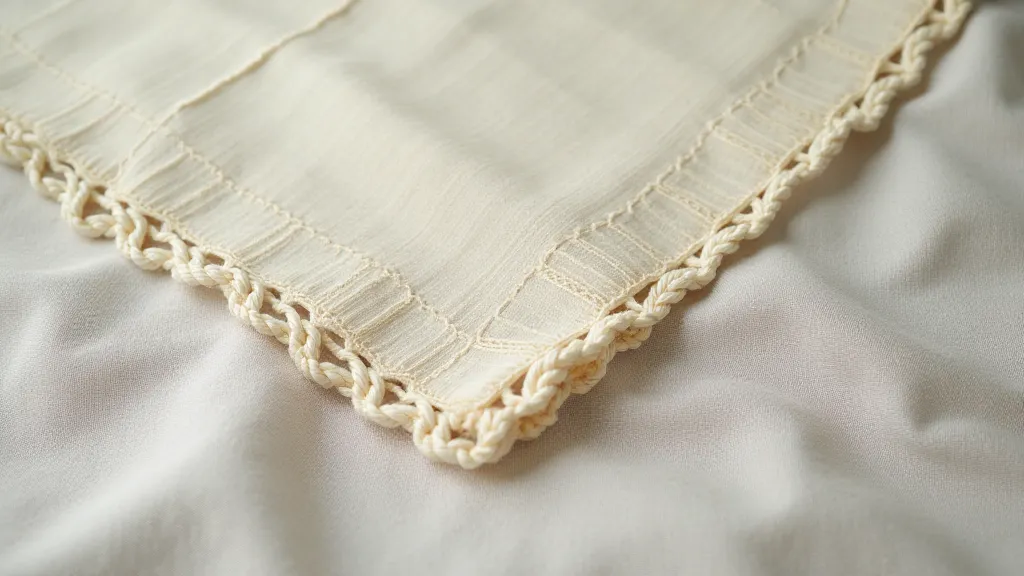
The Deeper Significance: Beyond Utility
Victorian handkerchiefs were not simply functional objects; they were expressions of sentiment, status, and artistry. The act of gifting a handkerchief was laden with meaning, conveying messages of affection, admiration, and sympathy. A delicately embroidered handkerchief might be presented as a token of engagement, a symbol of enduring love, or a gesture of heartfelt condolences. The choice of floral motifs was carefully considered, ensuring that the message conveyed was both appropriate and meaningful. Even the way the handkerchief was folded and presented held significance, contributing to the overall impact of the gesture. These seemingly small tokens hold powerful narratives, echoing the social mores and emotional landscape of a bygone era.
Conclusion
Victorian-era handkerchiefs with floral motifs are captivating pieces of textile history. Their beauty, symbolism, and craftsmanship offer a unique window into a bygone era. By understanding the trends, techniques, and meanings associated with these delicate treasures, you can gain a deeper appreciation for their significance and perhaps even add a beautiful piece of history to your own collection.
